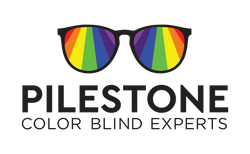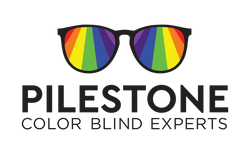Color blind test results

About your color blindness:
Protan is a type of red-green color blindness that makes up approximately 20% of all color deficiency cases.
Someone with protan color deficiency can only see 2-3 different hues of color compared to someone with normal color vision who can distinguish 7 hues of color.
As a result of this protan color deficiency can make reds, greens, yellows and browns appear similar to one another.
How it can affect your life:
Driving - More specifically identifying signal lights and color coded signs that are designed to stand out such as danger and warning signs.
Color coded charts - People suffering from color blindness can have great difficulty reading color coded charts and other similar types of activities.
Jobs - Certain job restrictions apply if you have a color vision deficiency.
Education - More specifically school education and all of the colors that are needed to complete class-room activities.
Living a life full of color - Something most of us take for granted but it is estimated that someone who is color blind may only see as few as 10,000 shades of color compared to someone with normal color vision who can see up to 1,000,000 distinct shades of color.
What you can do to help:
Equip yourself with a pair of special color blind glasses. Pilestone work alongside the leading industry experts and together we have individually crafted 5 lenses for a variety of types and severity of color blindness - ensuring maximum color impact.
Pilestone glasses can give you a life changing experience as our new advanced light-filtering technology will selectively filter out certain wavelengths of light enabling someone with color blindness a world full of color.



